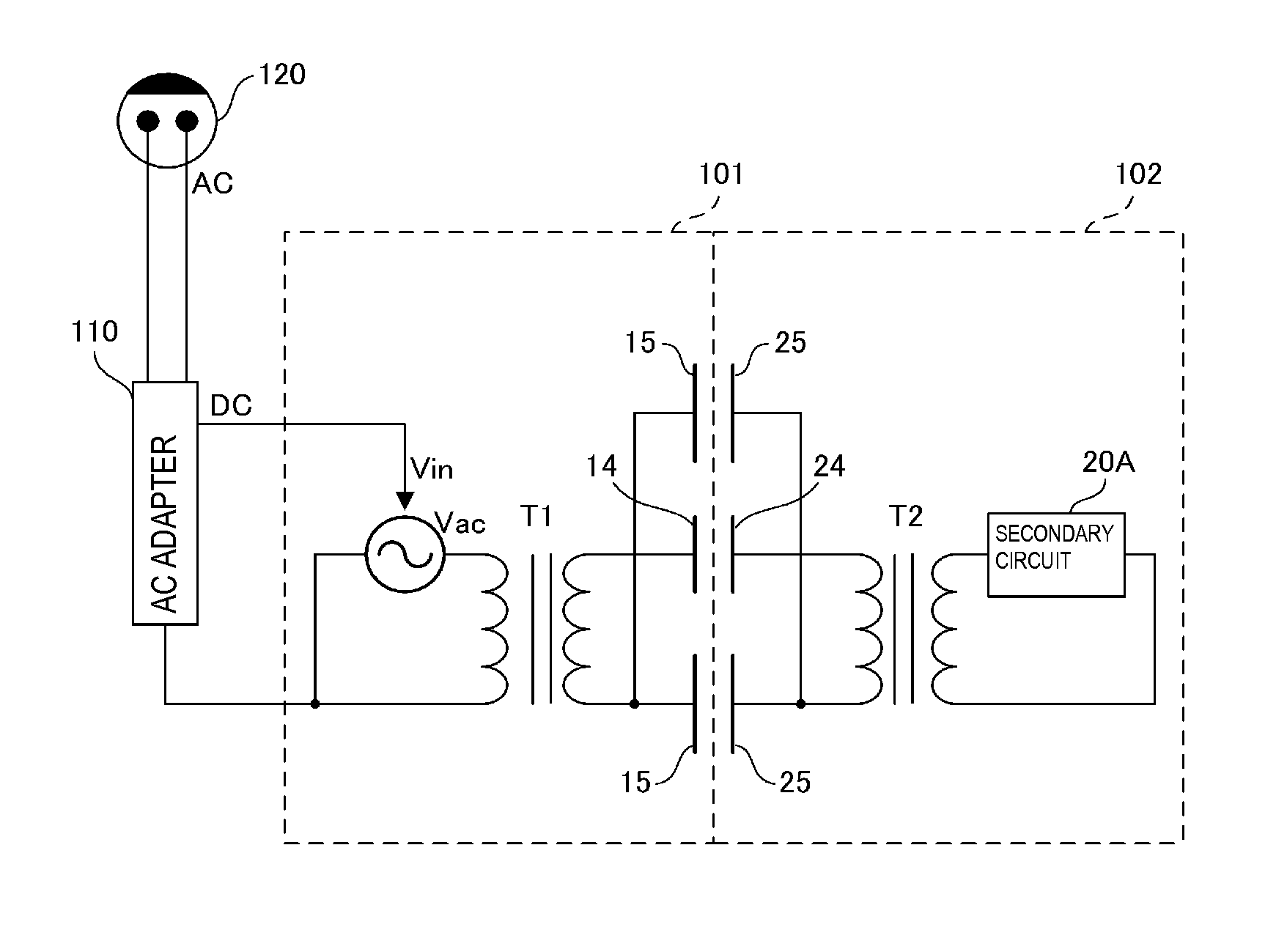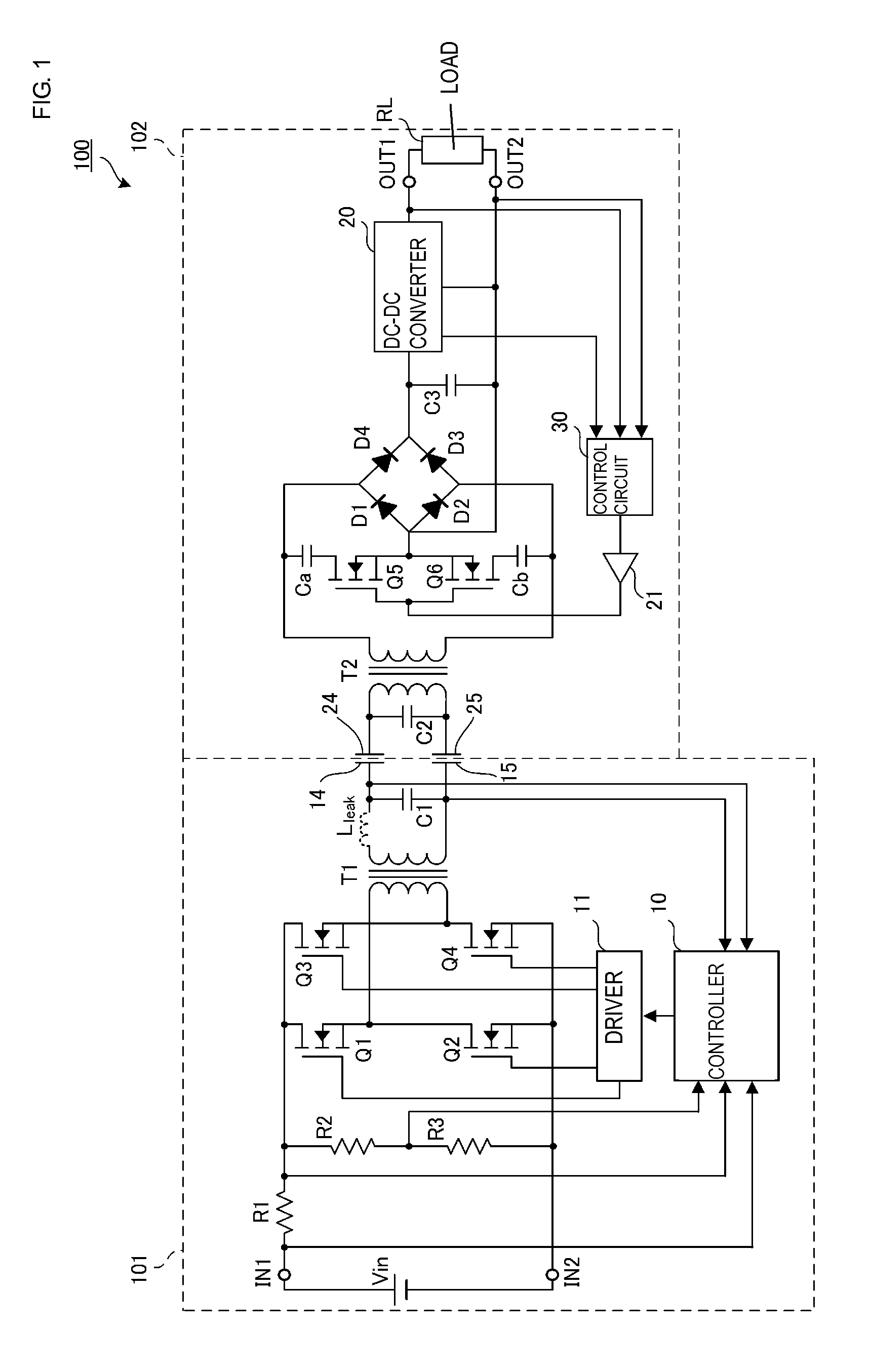Wireless power transmission system
a power transmission system and wireless technology, applied in the direction of transformers, inductances, transportation and packaging, etc., can solve the problems of reducing the size of the apparatus, reducing the power transmission efficiency, etc., and achieve the effect of improving power transmission efficiency and suppressing the variation of output voltag
- Summary
- Abstract
- Description
- Claims
- Application Information
AI Technical Summary
Benefits of technology
Problems solved by technology
Method used
Image
Examples
first embodiment
[0032]FIG. 1 is a circuit diagram of a wireless power transmission system according to a first embodiment. FIG. 2 is a schematic diagram of the wireless power transmission system.
[0033]A wireless power transmission system 100 according to the present embodiment is formed of a power transmitting apparatus 101 and a power receiving apparatus 102. The power receiving apparatus 102 includes a load RL. The load RL is a secondary battery. The power receiving apparatus 102 is, for example, a mobile electronic apparatus including the secondary battery. Examples of the mobile electronic apparatus include a cellular phone, a personal digital assistant (PDA), a mobile music player, a notebook computer, and a digital camera. The power receiving apparatus 102 is mounted on the power transmitting apparatus 101, which is a charging stand for charging the secondary battery of the power receiving apparatus 102.
[0034]The power transmitting apparatus 101 is connected to a power supply 120 through an A...
second embodiment
[0058]FIG. 8 is a circuit diagram of a wireless power transmission system according to a second embodiment. FIG. 9 is a schematic diagram of a wireless power transmission system. The wireless power transmission system 100 according to the first embodiment transmits power using electric field coupling. However, a wireless power transmission system 100A according to the second embodiment transmits power using magnetic field coupling.
[0059]In a power transmitting apparatus 101A, a power transmitting side coupling coil (power transmitting side coil of the present invention) 16 is connected to the secondary coil of the step-up transformer T1. The power transmitting side coupling coil 16 and the capacitor C1 form a series resonant circuit. In a power receiving apparatus 102A, a power receiving side coupling coil (power receiving side coil of the present invention) 26, in which a high-frequency current is induced due to electromagnetic induction between the power receiving side coupling co...
third embodiment
[0064]FIG. 11 is a circuit diagram of a wireless power transmission system according to a third embodiment. The power transmitting apparatus 101 provided in a wireless power transmission system 100C according to the third embodiment is similar to that of the first embodiment. A power receiving apparatus 102C has a configuration in which a series circuit formed of a switching device Q7 and a capacitor Cc and a series circuit formed of a switching device Q8 and a capacitor Cd are respectively connected in parallel with the diodes D2 and D4 of the power receiving apparatus 102 according to the first embodiment. In the third embodiment, four-level (four-value) data can be transmitted from the power receiving apparatus to the power transmitting apparatus, thereby enabling high-rate information transmission, whereas binary data is transmitted in the first and second embodiments.
[0065]A series circuit formed of the switching device Q7 and the capacitor Cc and a series circuit formed of the...
PUM
 Login to View More
Login to View More Abstract
Description
Claims
Application Information
 Login to View More
Login to View More - R&D
- Intellectual Property
- Life Sciences
- Materials
- Tech Scout
- Unparalleled Data Quality
- Higher Quality Content
- 60% Fewer Hallucinations
Browse by: Latest US Patents, China's latest patents, Technical Efficacy Thesaurus, Application Domain, Technology Topic, Popular Technical Reports.
© 2025 PatSnap. All rights reserved.Legal|Privacy policy|Modern Slavery Act Transparency Statement|Sitemap|About US| Contact US: help@patsnap.com



